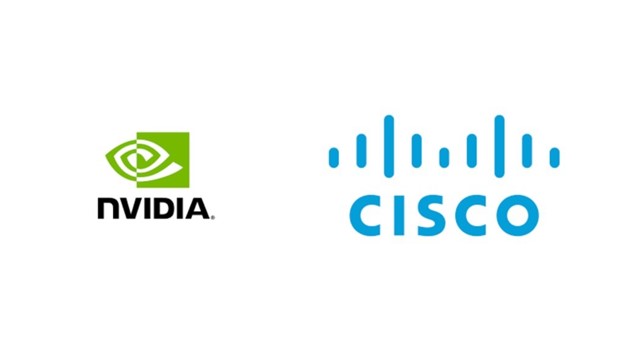
We all get ideas either in the shower or while driving in traffic or while we are dreaming.
The question is “Do we take action?” Most of us don’t as our mind gives us so many excuses- “ I don’t know where to start, I am happy where I am or I have to pay my bills” and we generally let go of them.
We rationalize and tell ourselves that 9 out 10 businesses fail every year and that is a fact, so why should we even try?
Ideas are available in plenty but it is all about execution. So that one business that succeeds, has a good execution plan.
I have had the opportunities to start companies and also have created market entry strategies and business plans in the corporate world.
I may not have those claimed successes but I have learned a lot and enjoyed the experiences with unbridled enthusiasm and passion while working on them.
I want to share some of the practical nuggets that may be useful in motivating you and in overcoming that Inertia.
I would like to take you through my journey when I got an idea in the shower on Sunday, August 1st 1999 when I was studying my Master’s degree in Syracuse University.
I was helping my fellow countrymen- Indian students; some might call them ‘Fresh off the Boat’ (FOB) in a jocular manner. They were just enrolling into their academic programs and settling in a new country.
I was in a similar situation the previous year and could empathize what they were going through.
It is a big change for international students as they are moving to a new country, leaving their families behind as well as getting adjusted to the new environment, culture and people.
I realized that while there were so many websites in the home country that addressed getting admissions to US universities, there were not many websites addressing about living in the US.
For example finding housing, getting a phone line, setting up the utilities, finding on campus job to support yourself, applying a credit card and many more.
So here I had my Eureka moment and said why not create a website for international students and focus on living in the US.
1) Problem Definition and Structuring
The conceptualization stage is exciting because you have a lot of ideas coming up with all the features you want in your product or mobile app in today’s digital world. STOP!!
While you might have those great ideas, write them down but don’t jump into the solution yet. You should spend time in framing and structuring the problem you are solving.
You need to ask open-ended questions to yourself or a potential customer – ‘Why, What, Who, Where, When and How’ about the problem.
You need to think that you are the customer of your product or service and have that mindset. Remember that customers buy products or services that solve their problems.
You might be able lure them with great sales and marketing gimmicks once but they might not become your returning or referring customers, which is essentially what you want.
Are you aware of the Pareto Principle? 80 % of the outcomes in a given situation are determined from 20% of the inputs.
In other words, your customers are going to get 80% value from 20% of the features of your product or service.
The key is to interview your customers with open-ended questions and not YES/NO questions to investigate and develop solutions that address these 20% pain points.
The more time you spend in this step the more clarity you get about the important customer pain points and then you can prioritize them.
Just think about Microsoft Word, there are 100s of features but we generally use only a few essential features that are valuable to us in any given day.
I too started thinking about my features for the website. I was taking a course in research techniques at that time so I held focus groups, 1-1 interviews with my international classmates.
I had a hypothesis of what the students wanted as I had been to through the process. I found the prospective students major pain-points.
They were- what are the prospective student’s chances of getting in the university of choice, financial aid prospects and most importantly about internships and future job prospects.
2) Finding an Accountability Partner and maintain a schedule
It was the Dotcom era and everybody was talking about business plans and million dollar valuations. I did not know how to write one as I had an engineering background.
I also realized that I needed to be motivated and accountable to come up with a business plan.
So I proposed to one of professors that I would do an independent study for credit under him and write a business plan for developing a website for international students.
He readily agreed and that helped in setting a deadline; end of the semester and also a schedule to give biweekly updates.
I understand that not everybody is in school and can have a professor for accountability. I would advice that you find a friend or a colleague who you trust and will keep you motivated and accountable.
At times, it so happens that this person may become part of your team or advisory board.
You should document your activities for your plan and set achievable deadlines and use a collaborative work file such as Google Docs so that your accountability partner has access to it.
You can make updates to it and if you are not able complete a task fully set a new date to complete it. Always acknowledge your wins and it is work in progress and does not need to be perfect.
3) Prototyping /Solutioning
If you are looking to raise capital or in a company doing product development you must develop a prototype and have analytics associated with it.
You should target a subset of your customers, who you believe are going to be early adopters and help create a networking effect.
This should be specific to age, gender, ethnicity or any other attribute relevant to your idea.
When Facebook started, they initially focused on college students in Ivy League university campuses and today it is has over a billion users from different continents, ethnicities and age groups.
This is a difficult step, as most people need to find a partner. If you have a technical background, it may be easy for you to develop but you require a businessperson to help you assimilate and structure your ideas.
The same applies to a businessperson who requires a technical person to help develop the idea. If you are both, you are my hero.
The prototype development is an iterative process and you need to get constant feedback from your target audience and backed with analytics tools such as Google analytics or Kissmetrics.
If your idea is not technical one and for example you want to start an Italian restaurant, interview Italian restaurant owners across the country or in states that would not deem you as competition.
You will be surprised how much you can learn from their experiences and how willing they are to share.
4) Writing a Business Plan
Once you have really identified the crux of the problem, created a prototype solution and have analytics backing it, writing a business plan becomes easy. You will notice that you find the required market research to validate your business case comes effortlessly.
At times, if it is social problem you want to solve, you might find vast amount of free research.
It is always good to document your plan first in word format as it helps crystallize your thought process and then powerpoint as it is good for presentations. The key business plans elements include
- Problem Statement- you are addressing Why, What, Who, Where and When about your idea?
- Solution- Product & Services- you describe Why, What, How you are going to solve the problem. Provide your prototype analytics as it validates your business case. Expand on the product features, services etc.
- Industry and Market Overview- you give an overview of the industry, the total addressable market, the different customer market segments and which one you are going to serve first.
- Competition– you describe the alternatives- direct and indirect competition and also what you are doing to fill the white spaces (gaps). You need to articulate about an unfair advantage.
- Business Model– you explain how you make money and your cost structure.
- Go to Market Strategy- how are you going to launch and who is your target customer, the marketing and partner channels you are going to use.
- Financials- you should have 3 year pro forma- revenues, cost of goods sold, gross margins, operating expenses and Earnings before interest, taxes, depreciation and amortization (EBITDA). Do not get overwhelmed with these terms. These are just assumed projections and it is always debatable.
- Capital requirements- you need to come with up how much money you have spent so far including time and effort, how much money you require and what are you going to do with it for next 1 to 3 years.
- Management Team and Advisory Board- you need to have profiles of the team members- CEO, CFO and CTO. You should have the ownership structure in place so that you project a united front. You should also have list of people who are mentoring and advising you. This is quintessential and is a make or break for raising capital.
- Critical Risks and Contingencies- this is not a must but it is good to have as it shows that you have thought things over. This should be specific and not generic
- Exit Strategy- you might feel your idea is your baby and wont let go of it but you need to think the potential acquirers, company valuation and how you are going exit or sustain.
With regards to my story, I partnered with one of my business school friends. It so happened that year Syracuse University had their first entrepreneurial business plan competition.
We entered the competition and won the first prize among 16 contestants. We got seed capital to implement our plan but had to pivot because of the funding and execution challenges.
To sum up, it is possible to realize our ideas- it just requires the willingness to take action and enjoy the process irrespective of the outcome. In the end, you have learned something and you can apply it elsewhere.
I want to leave you with a top featured TED talk given by Simon Sinek on Why, What and How? for companies. It is the abridged version and about 5 minutes.
-
Previous Post
Is your organization practicing Psychological Safety?
-
Next Post
Linkedin Profile Photo Really Matters!!!







binance konto skapande
December 9, 2024Your point of view caught my eye and was very interesting. Thanks. I have a question for you.
Binance
December 13, 2024Your article helped me a lot, is there any more related content? Thanks!
binance
December 14, 2024I don't think the title of your article matches the content lol. Just kidding, mainly because I had some doubts after reading the article. https://www.binance.com/de-CH/register?ref=UM6SMJM3
binance konto skapande
December 25, 2024Your article helped me a lot, is there any more related content? Thanks!
100 USDT
December 28, 2024Thank you for your sharing. I am worried that I lack creative ideas. It is your article that makes me full of hope. Thank you. But, I have a question, can you help me?
Inscreva-se na binance
December 30, 2024I don't think the title of your article matches the content lol. Just kidding, mainly because I had some doubts after reading the article.
binance
January 23, 2025Can you be more specific about the content of your article? After reading it, I still have some doubts. Hope you can help me.
binance
January 31, 2025Can you be more specific about the content of your article? After reading it, I still have some doubts. Hope you can help me.
binance bonus za napotitev
February 10, 2025Thanks for sharing. I read many of your blog posts, cool, your blog is very good.
binance konto
February 15, 2025Your point of view caught my eye and was very interesting. Thanks. I have a question for you.
Binance账户创建
February 24, 2025Thank you for your sharing. I am worried that I lack creative ideas. It is your article that makes me full of hope. Thank you. But, I have a question, can you help me?
Binance推荐代码
February 26, 2025Thanks for sharing. I read many of your blog posts, cool, your blog is very good.
Anonymous
March 4, 2025Thank you for your sharing. I am worried that I lack creative ideas. It is your article that makes me full of hope. Thank you. But, I have a question, can you help me? https://www.binance.com/ar-BH/register?ref=V2H9AFPY
“oppna ett binance-konto
March 26, 2025Thank you for your sharing. I am worried that I lack creative ideas. It is your article that makes me full of hope. Thank you. But, I have a question, can you help me? https://accounts.binance.com/tr/register?ref=W0BCQMF1
Rejestracja
March 26, 2025Your article helped me a lot, is there any more related content? Thanks!
Реферальный код на binance
April 10, 2025Your point of view caught my eye and was very interesting. Thanks. I have a question for you.
www.binance.com注册
April 12, 2025Thanks for sharing. I read many of your blog posts, cool, your blog is very good.
創建免費帳戶
May 7, 2025Thank you for your sharing. I am worried that I lack creative ideas. It is your article that makes me full of hope. Thank you. But, I have a question, can you help me?
Регистриране
May 15, 2025Can you be more specific about the content of your article? After reading it, I still have some doubts. Hope you can help me. https://accounts.binance.com/bg/register?ref=V2H9AFPY
binance referral code
May 18, 2025Your article helped me a lot, is there any more related content? Thanks!
Elder Law Attorneys
May 30, 2025Planning strategies for nursing home costs include navigating Medicaid's specific requirements. Experienced elder care attorneys offer valuable guidance.
створити акаунт на бнанс
June 14, 2025Your point of view caught my eye and was very interesting. Thanks. I have a question for you.
Vytvorit úcet na binance
June 15, 2025Thank you for your sharing. I am worried that I lack creative ideas. It is your article that makes me full of hope. Thank you. But, I have a question, can you help me?
вдкрити акаунт на бнанс
June 16, 2025Your article helped me a lot, is there any more related content? Thanks!
create a binance account
June 18, 2025Thanks for sharing. I read many of your blog posts, cool, your blog is very good.
开设Binance账户
July 3, 2025I don't think the title of your article matches the content lol. Just kidding, mainly because I had some doubts after reading the article.